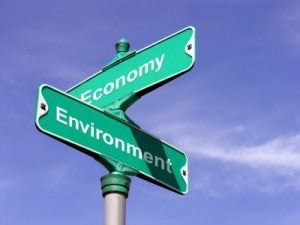Demand Soars for Green Bonds
By: Namrita Kapur, Managing Director of the Corporate Partnership Program
 As noted in my last post on green bonds, there has been a recent dramatic growth in green bond issuance. Supply is responding to burgeoning demand. Quite simply, investors are snapping up these debt instruments that are linked to an environmental benefit. Three recent transactions highlight this seemingly insatiable appetite:
As noted in my last post on green bonds, there has been a recent dramatic growth in green bond issuance. Supply is responding to burgeoning demand. Quite simply, investors are snapping up these debt instruments that are linked to an environmental benefit. Three recent transactions highlight this seemingly insatiable appetite:
- Massachusetts’ sale of $350 million in green bonds in September attracted more than $1 billion in demand from retail investors and institutions. This — the state’s second green bond issuance — will fund clean water, energy efficiency, open space protection, and river preservation projects.
- The order book for the Nordic Investment Bank’s $500 million green bond issue quickly climbed to $800 million, with more than a third of investors being new to NIB. This bond will funnel proceeds to climate-friendly projects in Nordic countries, such as renewables, energy efficiency, green transportation, and wastewater treatment.
- In September, the World Bank tripled the size of its planned structured green bond to $30 million in response to investor demand, raising more than expected for climate projects, such as energy and forestry initiatives. Since its first green issuance in 2008, the World Bank reports raising more than $7 billion from 77 bonds in 17 currencies.
These data points back up the buzz I’ve heard among market players. At the recent Associated Grant Makers fossil fuel divestment panel, Sonia Kowal of Zevin Asset Management talked about the tremendous interest Zevin has seen from clients for buying green bonds.
This swelling demand could be just the catalyst we need for success in the Paris climate talks next year. A robust market of green bonds being deployed to finance projects that have an environmental impact helps alleviate concerns about access to capital – a key barrier in past negotiations.[Tweet “3 recent transactions highlight the seemingly insatiable appetite for #greenbonds: http://ow.ly/Fj69X “]
A new report from HSBC estimates a $300 billion annual gap in green investment needed to achieve 2 degrees Celsius. Green bonds hold the potential to put a significant dent in this figure by attracting non-specialist, fixed-income investors who otherwise would be putting their money into government bonds, corporate debt, or even credit derivatives. If even a fraction of this $80 trillion market moves to environmental finance, it could tip the scales in the climate fight, as noted by Angus McCrone, chief editor for Bloomberg New Energy Finance.
We will be following this sector closely, as it may hold the key to turning the course on climate, and will blog in more depth about specific transactions.
Photo source: eProGuide
This post originally appeared our EDF+Biz blog.











